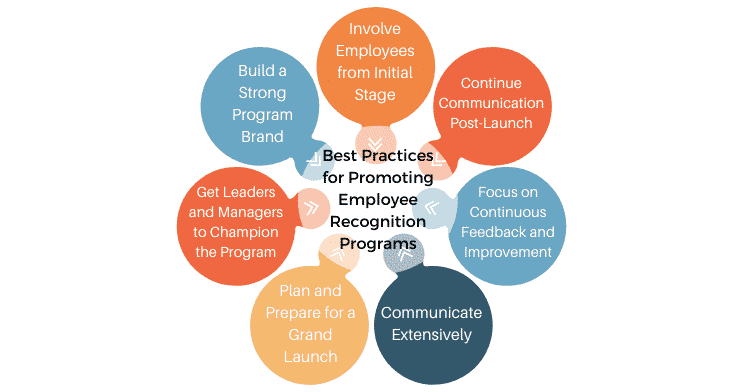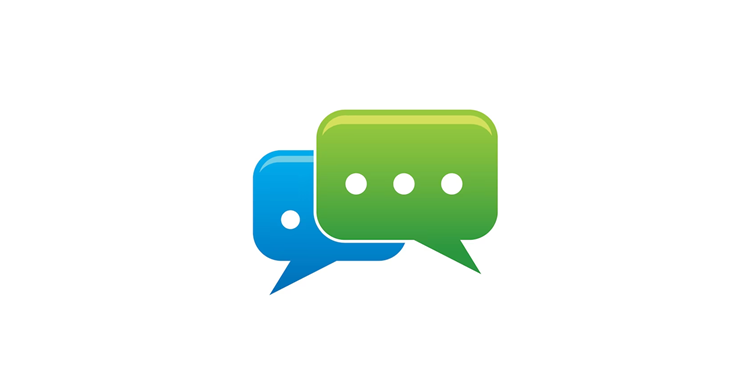1. Build a Strong Program Brand: Create a recognizable and appealing brand for the recognition program that resonates with employees, including elements like the name, logo, and theme.
2. Involve Employees Early: To boost participation from the start, engage employees in the program’s development, such as gathering their inputs on its design, rewards, and launch.
3. Communicate Extensively: Use various channels and methods to communicate the program’s features and benefits before and after launch to maintain interest and engagement.
4. Get Leaders to Champion the Program: Involve senior leaders and managers in promoting the program, which adds credibility and encourages broader participation across the organization.
Most organizations today understand the importance of creating an effective rewards and recognition program that aligns with the organization’s business goals and cultural values. However, organizations need to build traction for employee recognition programs among their employees to make them successful and produce the desired results.
An employee recognition program can be successfully implemented and executed only if the workforce finds it exciting and engaging enough to participate enthusiastically.
A well-designed program may fail without proper participation from the employees.
Hence, promoting the recognition program helps maximize workforce participation and paves the way for its success.

Moreover, it sends a positive message to the workforce that their employer is seriously considering their efforts and contribution to business growth.

Developing an effective recognition program requires a significant investment of the organization’s funds, time, and effort.
Therefore, to maximize the returns of this investment, the organization needs to promote the program to its workforce.
They also need to motivate them to participate in it regularly.
Here are a few practical ways to promote employee rewards and recognition programs among the workforce:
1. Build a Strong Program Brand
2. Involve Employees from Initial Stage
3. Communicate Extensively
4. Plan and Prepare for a Grand Launch
5. Get Leaders and Managers to Champion the Program
6. Continue Communication Post-Launch
7. Focus on Continuous Feedback and Improvement


Organizations need to create an employee recognition brand with which their employees can connect.
Designing the program to meet the expectations of the workforce is essential.
Branding can be achieved through the program name, logo, theme colors, award names, and even the language and tone of the write-ups associated with the program.
All these elements combine to inject a unique brand personality into the program, making it more attractive to employees.

Notably, the earlier in the program development and implementation cycle that employees can get involved, the greater their level of interest and participation once the program is launched.
Hence, organizations can seek inputs and ideas from employees about naming the program, the best ways to launch it, the type of rewards, and even how they are presented, etc.
Such a level of involvement can help boost employee motivation and inspire them to participate in the program from day one.

One of the most effective ways for organizations to create buzz around their employee recognition programs is to communicate extensively about them to their employees.
They should use every opportunity to reiterate the various features and benefits of the program.
The communication should intensify closer to the launch date and aim to build interest and excitement among the employees.
Organizations should conduct town halls, open houses, and team meetings and develop online and offline materials about the program, such as FAQs.
They should use different modes of communication, such as email, the Intranet, or platforms such as Teams or Slack, to disseminate information about the program.

The launch of the program should be well-planned and a grand affair.
Apart from extensive communication in the run-up to the launch, the launch itself should be planned and managed as an event of importance.
The launch could be done in a large-scale online or offline forum.
The event’s scale and the senior leaders’ presence can help maximize the program’s visibility.

It is essential to involve the senior leaders in promoting the recognition program.
The leaders should be part of the communication and the forums related to the program. This can help build higher credibility for the program.
Involving line managers and supervisors in the program development and rollout is also very important.
This makes it easier for them to spread the word about the program. They can also answer any questions or queries that their team members might have about the same.

It is not enough to communicate extensively about the program before the launch or to have a grand launch event.
It is equally important to continue the communication even after the launch.
Post-launch, open house sessions, follow-up communication about the program features and benefits, and sharing early success stories can be useful.
Moreover, this can help the organization to maintain the momentum built up through the pre-launch and post-launch phases.

Additionally, feedback is a critical but often overlooked way to drive traction for employee recognition programs.
So, the organization should create proper mechanisms to gather regular feedback about the program from the employees such as satisfaction surveys and focus discussions.
Hence, organizations should utilize such feedback to modify or enhance the program.
Therefore, this needs to be a continuous process and might be one of the most essential factors in the program’s success.
The key metrics for measuring traction in an employee recognition program can vary depending on the program’s goals and objectives.

Here are some key metrics commonly used to assess the effectiveness and impact of employee recognition initiatives:

Measure the percentage of employees participating in the recognition program by giving and receiving recognition. A high participation rate indicates strong engagement and adoption of the program across the organization.
Track the recognition events over time, including the number of recognitions per employee or team. A steady increase in the frequency of recognition suggests that the program is gaining traction and becoming ingrained in the company culture.
Monitor the sentiment or feedback associated with recognition events. Analyze qualitative data such as comments, testimonials, or survey responses to assess the perceived value and impact of the recognition program on employee morale, motivation, and satisfaction.
Use employee engagement surveys or pulse checks to measure changes in employee engagement levels before and after the recognition program’s implementation. Look for correlations between recognition activities and improvements in engagement metrics.
Evaluate employee turnover and retention rates to determine if the recognition program has increased employee loyalty and retention. A decrease in turnover rates or an increase in employee tenure may indicate that the program effectively reinforces a positive work environment.
Assess changes in productivity metrics, such as individual or team performance, project outcomes, and key performance indicators (KPIs). Look for trends that suggest a positive correlation between recognition efforts and improvements in productivity and performance.
Measure the quality of work relationships and collaboration among employees. Look for indicators such as improved teamwork, communication, and trust levels within teams or departments, which a strong recognition culture may influence.
Gather employee feedback through surveys, focus groups, or one-on-one discussions to assess their perceptions and experiences with the recognition program. Use this feedback to identify areas for improvement and refine the program accordingly.
Conduct a cost-benefit analysis to evaluate the recognition program’s return on investment (ROI). Compare the costs associated with implementing and maintaining the program against the tangible benefits, such as increased employee engagement, productivity, and retention.
Assess the alignment of recognition activities with organizational goals and values. Look for evidence that recognition efforts reinforce desired behaviors, promote cultural norms, and drive progress toward strategic objectives.
By tracking these key metrics, organizations can gain valuable insights into the effectiveness of their employee recognition programs and make data-driven decisions to optimize engagement, performance, and retention efforts.
Organizations need to create traction for employee recognition programs among their workforce to derive the expected benefits. It is as important as designing and developing the program itself.

Lead author: Sagar Chaudhuri, the Co-Founder and CEO of HiFives. He is an HR Tech Evangelist with over 25 years of corporate and entrepreneurship experience. In the past, Sagar has worked in leadership roles with companies such as Genpact, Infosys, and ICICI Bank. He has an engineering degree from IIT Kharagpur and an MBA from IIM Lucknow. Connect on LinkedIn
To stay updated on the latest HiFives blogs, follow us on Twitter (@MyHiFives)